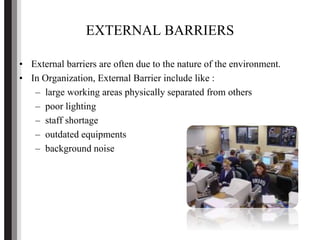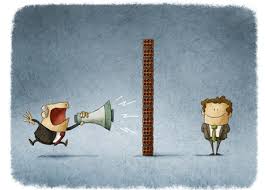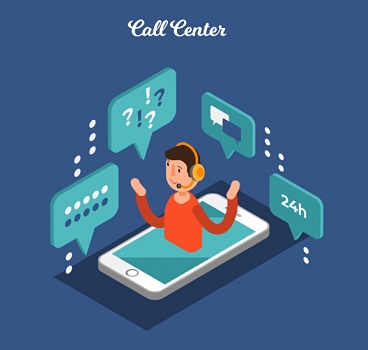External Barriers of Communication
External barriers of communication refer to obstacles that hinder effective communication between individuals, such as noise, distractions, technical jargon, and poor environmental conditions. Overcoming these barriers is essential for ensuring clear and efficient communication.
Effective communication is crucial for the success of any organization or personal relationship. However, external barriers can pose significant challenges to communication, making it important for individuals to be aware of and address these obstacles. External barriers can take various forms, including environmental factors, technological issues, and language barriers.
By understanding these barriers and employing strategies to overcome them, individuals can enhance their communication skills and foster better understanding and collaboration. We will explore the concept of external barriers of communication and provide insights into how they can be effectively overcome.
The Impact Of Noise On Communication
External barriers of communication include noise, which can have a significant impact on effective communication. Noise can disrupt the clarity of messages, making it difficult for individuals to understand and convey information accurately. It is important to address and minimize noise disruptions to ensure clear and effective communication.
Definition Of External Noise In Communication:
External noise refers to any unwanted or disruptive sounds that can negatively affect the process of communication. These sounds can come from the surrounding environment and can interfere with the clear transmission of messages between the sender and receiver. External noise can be physical or psychological in nature and can hinder effective communication.
Types Of External Noise:
External noise can manifest in various forms, including:
- Environmental noise: This type of noise includes background sounds like traffic, construction, machinery, or even weather conditions such as rain or wind.
- Technological noise: Noise caused by electronic devices, such as ringing phones, buzzing notifications, or poor audio quality during phone or video calls.
- Social noise: Distractions or interruptions caused by human interaction, including conversations, loud laughter, or background chatter in public spaces.
- Physical noise: Noise caused by inanimate objects, such as a faulty microphone, static or interference on a phone line, or poor audio equipment.
How External Noise Affects Communication:
The presence of external noise can have several detrimental effects on communication:
- Distortion: Noise can distort or garble the information being transmitted, leading to misinterpretation or misunderstanding of the intended message.
- Loss of information: Important details or elements of the message may be lost or overlooked due to the interference caused by external noise, resulting in incomplete communication.
- Reduced clarity: Noise can make it difficult for the receiver to hear or understand the message clearly, leading to frustration and potential miscommunication.
- Increased effort: Both the sender and receiver may need to exert additional effort to overcome the noise and ensure effective communication. This increased effort can lead to fatigue and reduced overall communication efficiency.
Examples Of External Noise In Various Contexts:
External noise can be encountered in numerous contexts, such as:
- Workplace: Busy offices with open floor plans, ringing phones, or nearby machinery can create distractions and hinder effective communication between colleagues.
- Educational settings: Noisy classrooms, school hallways, or even outdoor areas can disrupt teacher-student communication and impede learning.
- Public spaces: Restaurants, airports, or public transportation environments with high levels of ambient noise can make it challenging to communicate effectively.
- Online communication: Technological noise, such as poor audio or video quality during virtual meetings or conference calls, can disrupt communication flow.
Strategies To Overcome External Noise Barriers:
- Find a quiet environment: Choose a location with minimal background noise or distractions, such as a quiet conference room or a secluded area.
- Use noise-cancelling technologies: Employ headphones or microphones with noise-cancelling features to minimize the impact of external noise.
- Adjust communication methods: Explore alternative communication channels, such as email or messaging, when face-to-face or verbal communication is hindered by excessive noise.
- Speak clearly and concisely: Enunciate words clearly and express thoughts in a concise manner to ensure better understanding despite external noise.
- Repeat or rephrase important information: Emphasize critical points by repeating or rephrasing them to ensure they are heard and understood amidst external noise.
By understanding the definition of external noise, recognizing different types, acknowledging its impact on communication, and implementing effective strategies, individuals can overcome external noise barriers and foster better communication in various contexts.

Credit: www.slideshare.net
Overcoming Language And Cultural Barriers
Overcoming language and cultural barriers is essential to effective communication. By understanding and addressing external barriers, such as language differences and cultural norms, individuals can bridge the gap and foster meaningful connections.
Language Barriers In Communication:
- Language barriers often arise when individuals involved in communication do not speak the same language.
- Misunderstandings can occur due to differences in vocabulary, grammar, pronunciation, and idiomatic expressions.
- Language barriers can lead to confusion, misinterpretation of messages, and ineffective communication.
Cultural Barriers In Communication:
- Cultural barriers refer to differences in values, beliefs, customs, and behavioral norms that exist between people from different cultures.
- These barriers can create misunderstandings, stereotypes, and judgements, preventing effective communication.
- Cultural barriers can include variations in nonverbal communication, such as gestures, facial expressions, and personal space preferences.
Impact Of Language And Cultural Barriers On Effective Communication:
- Language and cultural barriers can hinder understanding, compromise clarity, and impede the flow of information.
- They may lead to misunderstandings, tension, and can negatively impact relationships and collaboration.
- Ineffective communication resulting from these barriers can also hinder productivity and hinder achievement of goals.
Strategies For Overcoming Language And Cultural Barriers:
- Use simple and clear language, avoiding jargon or technical terms that may be difficult for non-native speakers to understand.
- Provide written materials or visual aids to support verbal communication.
- Be patient and encourage questions to ensure comprehension.
- Use translation services or interpreters for effective communication in multilingual settings.
- Foster cultural competence through education and training to enhance understanding and respect for different cultural perspectives.
Importance Of Cultural Sensitivity In Communication:
- Cultural sensitivity is crucial for effective communication, as it helps to navigate cultural differences and promotes inclusivity.
- Being aware of and respecting diverse cultural practices and beliefs fosters trust, understanding, and cooperation.
- Cultural sensitivity also minimizes the risk of causing offense or misunderstanding, fostering positive communication outcomes.
The Role Of Technology In Communication Barriers
Technology plays a crucial role in overcoming external barriers of communication by facilitating real-time and efficient interaction regardless of geographical distances. Through various communication tools and platforms, individuals can bridge the gap created by external factors and communicate seamlessly, enhancing collaboration and productivity.
Introduction To Technology Barriers In Communication
Technology plays a crucial role in today’s communication landscape. While it has undoubtedly revolutionized the way we connect and collaborate, it also presents its fair share of challenges. In this section, we will explore the impact of technology barriers on effective communication in the workplace and discuss strategies to mitigate these barriers.
Additionally, we will delve into the importance of embracing technological advancements for better communication outcomes.
Common Technology Barriers In The Workplace
- Lack of technical proficiency: Many individuals face difficulties in using technology effectively, especially when it comes to complex communication tools or platforms.
- Connectivity issues: Unstable internet connections, network congestion, or hardware malfunctions can disrupt communication flow and hinder effective collaboration.
- Information overload: The constant stream of notifications, emails, and messages can be overwhelming, leading to diminished attention spans and difficulties in processing information effectively.
Impact Of Technology Barriers On Communication Effectiveness
- Misinterpretation of tone and intent: Without face-to-face interaction, it becomes harder to gauge nonverbal cues and accurately interpret the sender’s intention, leading to misunderstandings.
- Reduced personalization: Automated responses, templates, and impersonal communication tools can create a sense of detachment and diminish the personal touch in conversations.
- Delayed response times: With multiple communication channels and platforms, it becomes challenging to keep up with all the incoming messages, resulting in delayed responses and potential communication breakdowns.
Strategies For Mitigating Technology Barriers
- Proactive training and support: Providing comprehensive training programs and ongoing technical support can enhance employees’ technical proficiency and confidence in using communication tools.
- Clear communication guidelines: Establishing clear guidelines and expectations for written communication can help in reducing misinterpretation and ensure more effective exchanges.
- Streamlining communication channels: Encouraging the use of centralized communication platforms can minimize information overload and ensure a more organized exchange of information.
Embracing Technological Advancements For Better Communication
- Adopting collaboration tools: Leveraging collaborative platforms and project management tools can streamline communication, improve productivity, and foster better teamwork.
- Utilizing video conferencing: Incorporating video conferencing technology can bridge the gap of remote work or geographically dispersed teams, facilitating more engaging and personal communication.
- Exploring voice and chatbots: Embracing the use of AI-powered chatbots and voice assistants can enhance customer support, automate repetitive tasks, and free up time for more meaningful interactions.
While technology barriers can pose challenges to effective communication, understanding these barriers and implementing appropriate strategies can help overcome them. Embracing technological advancements can facilitate better communication practices and drive productivity in the workplace.
Frequently Asked Questions On External Barriers Of Communication
What Are 5 Examples Of External Barriers?
Examples of external barriers to communication are noise, distractions, technical language, poor phone connections, and timing. Noise can disrupt the message being conveyed, making it difficult for the receiver to understand. Distractions, such as loud background noise or interruptions, can divert attention and hinder effective communication.
The use of technical jargon or complex language can create confusion and make it challenging for the audience to comprehend the message. Poor phone connections, including static or dropped calls, can lead to misunderstandings and miscommunication. Timing is also crucial, as communicating during busy or stressful periods may result in rushed or incomplete exchanges.
Overcoming these external barriers requires minimizing noise, creating a distraction-free environment, using clear and concise language, ensuring reliable communication technology, and selecting appropriate timing for effective communication.
What Are External Barriers?
External barriers refer to obstacles or hindrances that occur outside of an individual or organization and negatively impact effective communication. Examples of external barriers include noise, distractions, technical language, faulty communication channels (such as malfunctioning email or phone connections), time constraints, and unfavorable physical environments.
These external factors can impede the transmission and reception of messages, leading to misunderstandings or incomplete communication. Overcoming external barriers requires addressing each specific obstacle. This may involve finding a quiet space, using clear and concise language, ensuring that communication tools are functioning properly, and being mindful of the receiver’s availability and receptiveness.
By recognizing and proactively addressing external barriers, individuals and organizations can enhance communication effectiveness and minimize potential misunderstandings.
What Are 3 Examples Of External Communication?
Three examples of external communication include email communication, phone communication, and face-to-face communication. These forms of communication occur between individuals or organizations outside of a company or organization. Email communication allows for the exchange of written messages electronically, while phone communication enables individuals to communicate verbally over the phone.
Face-to-face communication involves direct interaction and conversation between individuals in person. These external communication methods are used to share information, collaborate, and build relationships with external stakeholders such as clients, customers, suppliers, and partners. By utilizing these communication channels effectively, organizations can establish clear and efficient lines of communication with external parties, ensuring effective collaboration and successful business outcomes.
How Can External Barriers To Communication Be Overcome?
External barriers to communication can be overcome in several ways. Firstly, minimizing noise in the environment can improve communication clarity. Secondly, reducing distractions and interruptions can help maintain focus during conversations. Thirdly, using effective listening skills such as active listening and paraphrasing can enhance understanding and ensure effective communication.
Fourthly, choosing appropriate communication channels and technologies that work reliably is crucial to overcoming external barriers. Finally, adapting communication style and language to suit the audience’s level of understanding can foster better comprehension. By implementing these strategies, individuals and organizations can overcome external barriers to communication and improve the overall effectiveness of their communication efforts.
Conclusion
External barriers of communication can significantly impact the effectiveness of any communication process. These barriers include factors such as noise, distractions, technical language, and environmental conditions. The presence of these barriers can hinder the transmission of information and lead to misunderstandings or misinterpretations.
It is crucial for individuals and organizations to recognize and address these external barriers to ensure clear and effective communication. Noise, whether it is caused by external factors or technological issues, can disrupt communication and make it difficult to convey messages accurately.
Distractions in the environment can divert attention away from the conversation, leading to missed information or confusion. The use of technical language that is unfamiliar to the audience can create a barrier to understanding, making it essential to use clear and concise language.
Additionally, environmental conditions such as poor phone connections or unreliable email systems can impede the smooth flow of communication. Overcoming these external barriers requires careful consideration and proactive measures. Employing effective communication techniques, such as using plain and simple language, minimizing distractions, and utilizing suitable technology, can help mitigate these barriers.
Organizations should also prioritize active listening, feedback, and the provision of clear instructions to ensure that communication is both understood and acted upon. Recognizing and addressing external barriers of communication is vital for successful communication outcomes. By taking proactive steps to mitigate these barriers, individuals and organizations can enhance their communication effectiveness and foster better understanding and collaboration.






